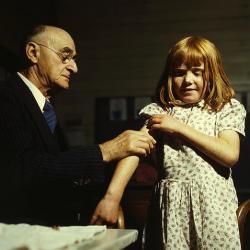First published on Educate the Young
MedStar Health is partnering with HPI (Healthcare Performance Improvement) to take this innovative health system to zero preventable harm utilizing the principles of high reliability organizations we have discussed previously on ETY.
First published on Educate the Young
MedStar Health is partnering with HPI (Healthcare Performance Improvement) to take this innovative health system to zero preventable harm utilizing the principles of high reliability organizations we have discussed previously on ETY.
With the depth of data now available to patients, providers and administrators, it’s much easier for all to see how well we are doing and where our challenges exist in healthcare. And while data allows for benchmarking, reimbursement, transparency and more, Judy Ewald, Senior Consultant from HPI reminded all in the room that what patients want while in our care remains very simple:
- Don’t Harm Me
- Heal Me
- Be Nice to Me

HPI provides some tangible tools and a road map that health systems can turn to in order to embed a transparent culture of safety–a reliability culture, designed for safety that integrates human factors engineering making it intuitive for healthcare providers to do the ‘right’ thing, and harder to do the ‘wrong’ thing. MedStar Health, with its own National Center for Human Factors Engineering led by Terry Fairbanks MD, is poised to embed this crowning skill set into their high reliability journey.
Nationwide Children’s Hospital in Columbus, OH is part of the HPI family and provides an excellent example of the transparency high reliability seeking organizations also embrace along the way. The link above takes you directly to their external website, and an open discussion on their serious safety event rate. The video below models an excellent example of leadership around the type of transparency needed to be successful.
And finally, here are some key takeaways from Monday’s high reliability boot camp:
- The role of a leader in a safe and reliable culture includes: 1) Defining values & expectations; 2) Finding and fixing problems, and; 3) Reinforcing and building accountability
- Safety has to be the Number One organizational focus. No other agenda takes higher priority.
- A summary from the work of Edgar Schein, Society of Sloan Fellows Professor of Management Emeritus and a Professor Emeritus at the MIT Sloan School of Management — If you want to change culture, remember it will be a result of what your employees see you doing as a leader — the behavior you reward, the stories you share openly, how transparent you are as a leader and how you respond in the critical moments.
- Practice 5:1 Feedback with all associates — 5 positive reinforcements to every one negative.
- Communication is key. Find a tool that works and make it standard work. I liked SBAR.
- Situation (What’s the situation, patient or project?)
- Background (What’s the important information/problems/precautions?)
- Assessment (What’s your read of situation, problems/precautions?)
- Recommendation (What’s your recommendation, request or plan?)
If you too are on the journey to high reliability, we would love to hear about it! Please share the solutions and tools that have helped, and the challenges along the way.
(image: physician / Wikipedia)